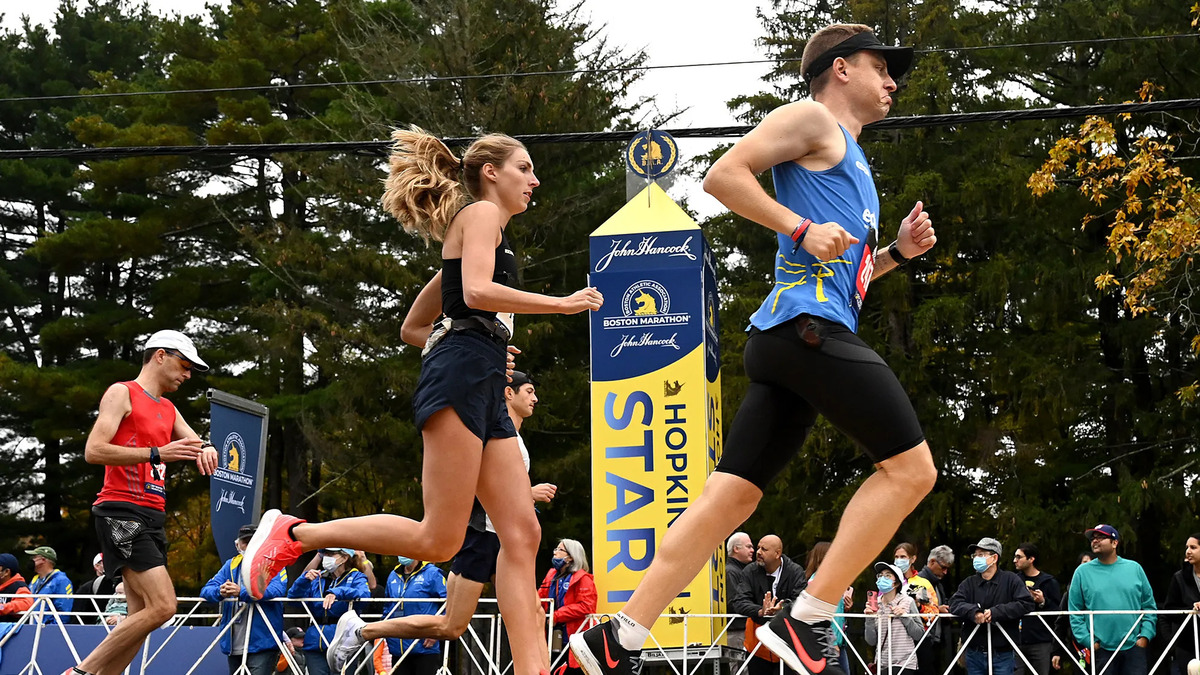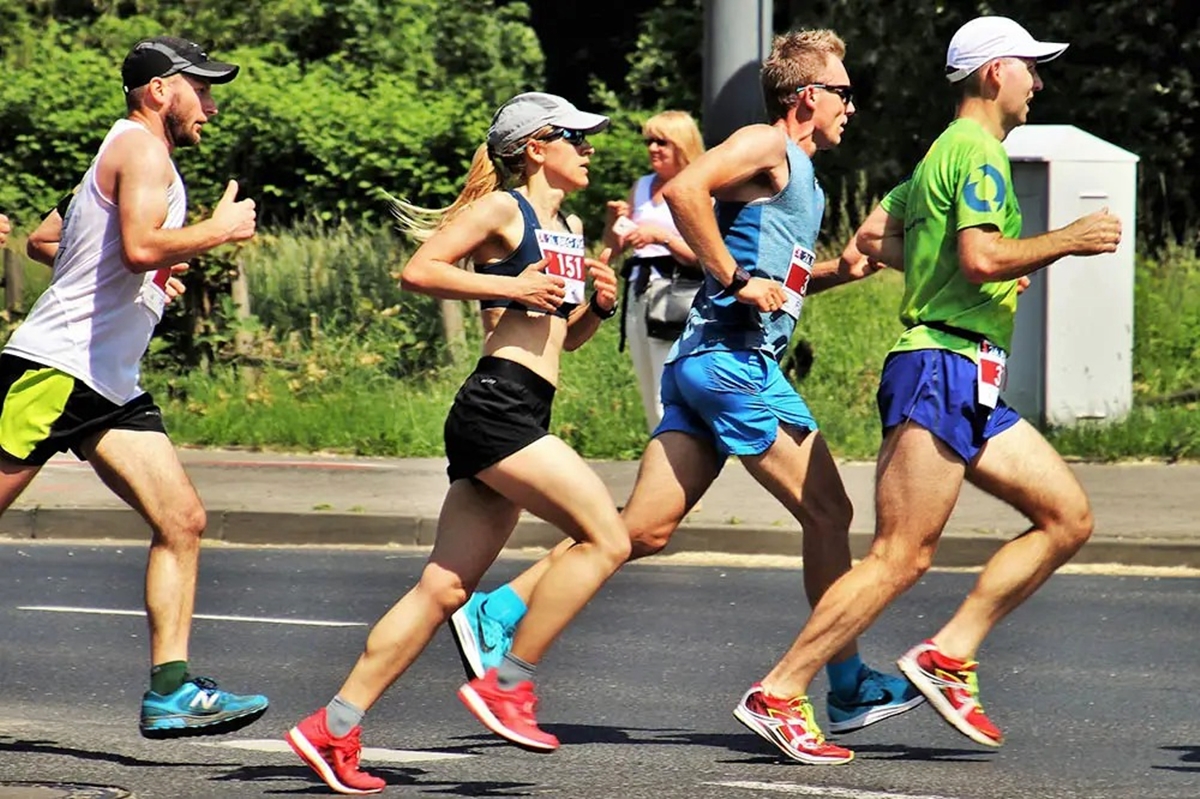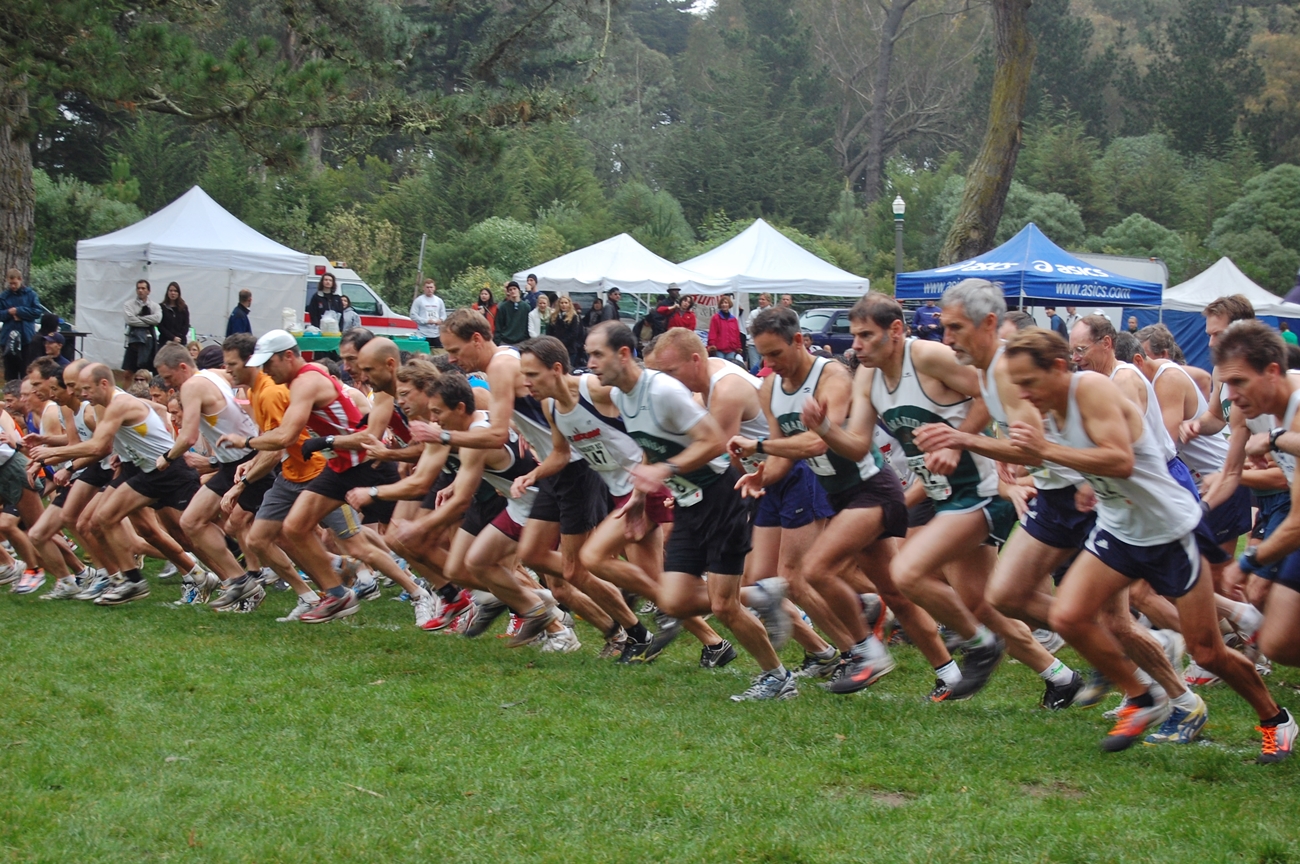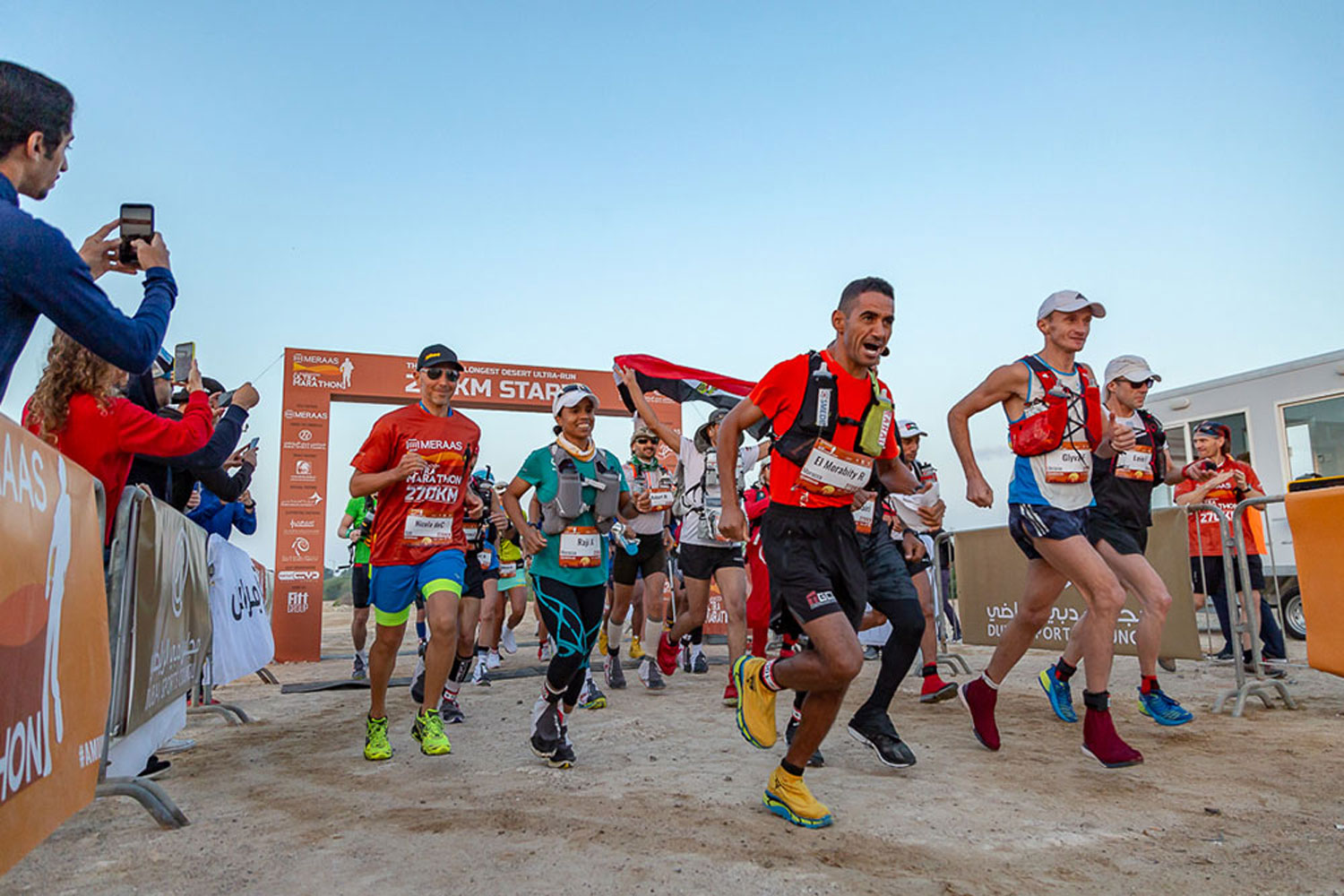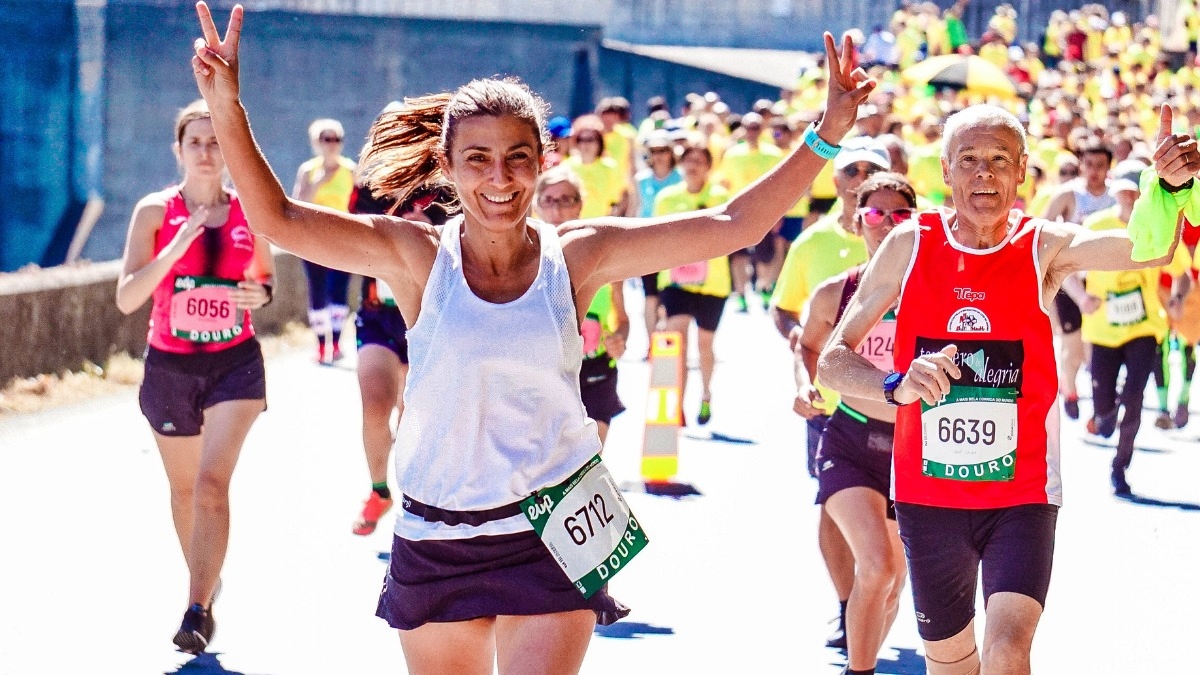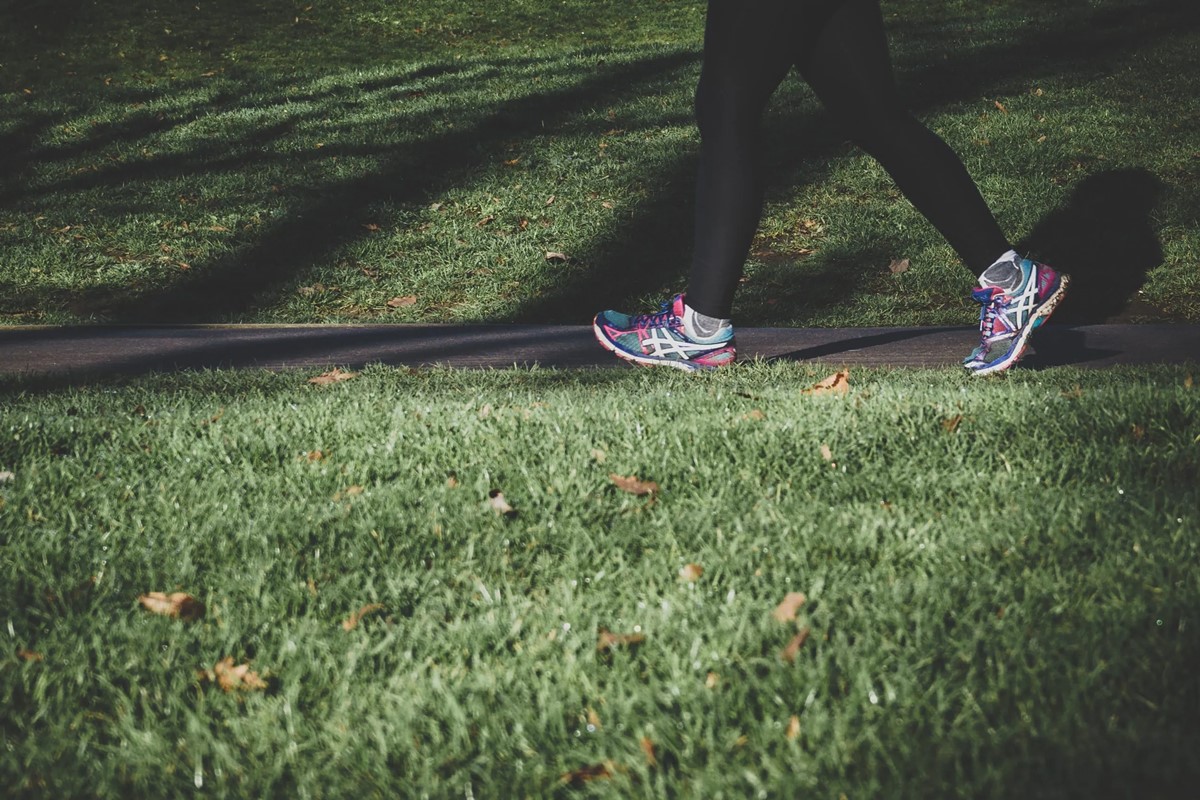

Featured
What Is A Good Running Pace
Modified: January 22, 2024
Discover the ideal running pace for optimal performance with our featured guide on what constitutes a good running pace. Improve your speed and endurance today!
What Is A Good Running Pace
When it comes to running, one of the key factors that determines your performance and progress is your running pace. Put simply, your running pace refers to the speed at which you run, typically measured in minutes per mile or kilometers per hour, depending on your preferred unit of measurement. But what exactly constitutes a good running pace?
The concept of a good running pace is highly subjective and can vary greatly from person to person. Factors such as age, fitness level, training experience, and even personal goals can all play a role in determining what is considered a good running pace for an individual. For some, a good running pace might mean completing a mile in under 10 minutes, while for others it may mean maintaining a steady pace for an extended period of time.
For beginners, it’s important to remember that running is a journey and everyone progresses at their own pace. What might be considered a good running pace for someone who just started running could be completely different from a seasoned marathon runner. It’s essential to set realistic expectations and focus on personal improvement rather than comparing oneself to others.
That being said, a general guideline for a good running pace for an average adult is around 9 to 10 minutes per mile or 5 to 6 minutes per kilometer. This pace is considered to be a good benchmark for maintaining a healthy level of cardiovascular fitness and endurance. However, it’s important to note that individual capabilities and goals can influence what is considered a good running pace.
It’s also worth mentioning that running pace is not a one-size-fits-all concept. Some individuals may excel at shorter distances with faster paces, while others may thrive at longer distances with a slower but consistent pace. It’s all about finding the running pace that works best for you and aligns with your personal goals and abilities.
Ultimately, what matters most is finding joy in running and maintaining a pace that challenges you without causing excessive strain or injury. As you continue on your running journey, your pace will naturally improve with consistent training and dedication. So, focus on progress rather than perfection, and enjoy the many benefits that running has to offer.
Introduction
Running is a popular form of exercise that not only benefits our physical fitness but also enhances our mental well-being. Whether you’re a seasoned runner or just starting out, understanding and improving your running pace is crucial for achieving your goals and maximizing your performance. But what exactly is running pace and why does it matter?
Running pace refers to the speed at which you run, typically measured in minutes per mile or kilometers per hour. It reflects how quickly you cover a certain distance and is an essential metric when it comes to evaluating your running progress. Your running pace can vary depending on factors such as terrain, weather conditions, and your current fitness level.
Why does running pace matter? Well, it serves as a useful tool for setting goals, assessing progress, and tailoring your training plan. By understanding your current running pace, you can establish realistic targets and track your improvement over time. Additionally, identifying your optimal running pace can help you develop the right strategies for specific races or distances.
However, it’s important to note that a good running pace is subjective and individualized. What may be considered fast for one person may be moderate for another. Factors like age, fitness level, and personal goals all come into play when determining a good running pace. It’s vital to focus on your own progress and avoid comparing yourself to others.
In this article, we will delve deeper into the concept of running pace, discussing factors that affect it and methods for determining your current pace. We will also explore how to set goals for your running pace and provide tips for improving it over time. Whether you’re a beginner looking to establish a baseline pace or an experienced runner aiming to boost your speed, this article will equip you with the knowledge and strategies to optimize your running pace and enhance your overall running experience.
Understanding Running Pace
Running pace is not just a simple measure of how fast you can cover a certain distance. It is a fundamental aspect of running that encompasses various factors and intricacies. To understand running pace better, let’s break it down into its key components.
The first component of running pace is speed. This refers to how quickly you move your body while running. Speed is typically measured in miles per hour or kilometers per hour. It represents the rate at which you can cover a certain distance, regardless of the time it takes.
The second component is duration. This is the amount of time it takes for you to complete a run. Duration is measured in minutes or hours. It is important to note that while duration and pace share a strong correlation, they are not the same. You can have different durations for the same distance if you run at different paces.
The third component is distance. This refers to the length or extent of your run, usually measured in miles or kilometers. The distance you run plays a vital role in determining your pace. As the distance increases, the pace at which you can maintain your running speed may vary.
Running pace can be expressed in different units, such as minutes per mile or minutes per kilometer. This gives you a clear indication of how long it takes you to cover a particular distance. For example, if you run a mile in 9 minutes, your pace would be 9 minutes per mile.
Understanding your running pace is important for several reasons. Firstly, it helps you set realistic goals and targets. By knowing your current pace, you can determine what pace you need to achieve to reach your desired target. Secondly, it allows you to gauge your progress over time. By tracking your pace in different runs, you can see if you are improving or if there are any fluctuations.
Additionally, understanding your running pace can help you schedule your workouts and races effectively. If you know your average pace, you can plan your training sessions accordingly to ensure you are pushing yourself while avoiding burnout or injury. It also allows you to strategize for races, knowing when to conserve energy and when to push for a faster pace.
Overall, understanding running pace goes beyond simply determining how fast you can run. It involves considering factors such as speed, duration, and distance to provide a comprehensive view of your running performance. By gaining a deeper understanding of your pace, you can optimize your training, set achievable goals, and enhance your overall running experience.
Factors Affecting Running Pace
Running pace is influenced by various factors that can impact your speed and endurance. Understanding these factors can help you identify areas for improvement and tailor your training to optimize your running pace. Let’s explore some key factors that can affect your running pace.
1. Fitness Level: Your overall fitness level plays a significant role in determining your running pace. Improved cardiovascular fitness and muscle strength can lead to a faster pace as your body becomes more efficient at utilizing oxygen and generating energy. Regular exercise, including strength training and cardiovascular workouts, can help improve your fitness level and ultimately enhance your running pace.
2. Terrain: The type of terrain you run on can impact your running pace. Running on flat surfaces like roads or tracks generally allows for faster and more consistent speeds. On the other hand, running on hilly or uneven terrain can slow you down and require more effort. Consider the terrain you’ll be running on and adjust your expectations and effort accordingly.
3. Weather Conditions: Temperature, humidity, and wind can all affect your running pace. Extreme heat or cold can make running more challenging and impact your performance. Additionally, high humidity and strong winds can make it harder for your body to regulate temperature and maintain a consistent pace. Be mindful of the weather conditions and adjust your pace and intensity accordingly.
4. Altitude: Running at higher altitudes may affect your running pace due to reduced oxygen levels. As you climb to higher elevations, the air becomes thinner, making it more difficult for your body to receive and deliver oxygen to your muscles. This can result in decreased running performance and a slower pace. If you’re running at high altitudes, be prepared to adjust your pace to accommodate for the decreased oxygen availability.
5. Rest and Recovery: Adequate rest and recovery are crucial for maintaining a good running pace. Overtraining or not allowing your body enough time to recover can lead to fatigue, muscle imbalances, and decreased running performance. Ensure you include rest days in your training program and prioritize recovery methods such as stretching, foam rolling, and proper nutrition to optimize your performance.
6. Mental Factors: Your mindset and mental state can also impact your running pace. A positive attitude, focus, and mental toughness can help you push through physical challenges and maintain a faster pace. On the other hand, negative thoughts or low motivation can hinder your performance. Cultivate a positive mindset and find strategies to stay mentally engaged and motivated during your runs.
It’s important to remember that these factors can vary from person to person and may have different levels of impact on each individual. Identifying and understanding how these factors affect your own running pace can help you tailor your training and make appropriate adjustments to improve your performance.
Determining Your Current Running Pace
Knowing your current running pace is crucial for setting goals and tracking progress. It allows you to establish a baseline and helps you understand the level at which you are currently performing. There are several methods you can use to determine your current running pace:
1. Timing Yourself: The simplest way to determine your running pace is to time yourself during a run. Use a stopwatch, a running app, or a fitness tracker to track the time it takes you to complete a specific distance. Divide the time by the distance to calculate your pace. For example, if you ran 3 miles in 30 minutes, your pace would be 10 minutes per mile.
2. GPS Running Watches: GPS running watches are becoming increasingly popular among runners as they provide accurate measurements of distance, time, and pace. These watches use satellite technology to track your runs and provide real-time pace updates, allowing you to monitor your pace as you run.
3. Treadmill Pace Calculations: If you prefer running on a treadmill, most modern treadmills have built-in pace calculators. Simply input the desired distance and time, and the treadmill will adjust the speed accordingly. This can give you a precise measurement of your running pace.
4. Running Apps: There are numerous running apps available for smartphones that can track your distance, time, and pace. Some apps even offer audio cues to notify you of your current pace during the run. Popular running apps include Strava, Nike Run Club, and Runkeeper.
5. Race Performance: If you’ve participated in a race recently, you can use your race time to determine your current running pace. Divide the race distance by the time it took you to complete it, and you’ll have your pace. However, keep in mind that race conditions may be different from regular training runs, so it’s best to use race times as a reference rather than a definitive measurement.
As you determine your current running pace, it’s important to be consistent with your measurements. Try to perform your pace tests under similar conditions, such as the same terrain and weather, to ensure accurate comparisons. It can also be beneficial to track your pace over time and evaluate any improvements or changes in your performance.
Remember, your running pace is unique to you. Don’t compare yourself to others or get discouraged if your pace is slower than expected. Focus on your own progress and set realistic goals based on your current abilities.
Once you have determined your current running pace, you can use it as a starting point for setting new goals and structuring your training program. Tailoring your workouts to gradually increase your pace will help you improve your speed and endurance over time.
Setting Goals for Your Running Pace
Setting goals for your running pace is essential for maintaining motivation, measuring progress, and challenging yourself to improve. Whether you’re a beginner or an experienced runner, having specific pace-related goals can help you stay focused and push yourself towards achieving better results. Here are some tips for setting effective running pace goals:
1. Identify Your Starting Point: Before setting goals, it’s important to understand your current running pace. Determine your average pace per mile or kilometer in your recent runs, races, or time trials. This will serve as your baseline, allowing you to track progress and set realistic targets.
2. Establish Short-term and Long-term Goals: Divide your running goals into short-term and long-term objectives. Short-term goals can be focused on improving your pace for shorter distances, while long-term goals can be aimed at achieving a specific pace for longer distances or races.
3. Make It Specific and Measurable: Ensure your goals are clear, specific, and measurable. Instead of simply aiming to “run faster,” set a target pace that you want to achieve within a certain timeframe. For example, aim to reduce your mile pace by 30 seconds in the next four weeks.
4. Be Realistic and Time-Bound: Set goals that are challenging yet attainable. Consider your current fitness level, running experience, and the time you can commit to training. Break your goals down into smaller milestones and assign a realistic timeline to achieve them.
5. Consider Your Overall Running Objectives: Align your pace goals with your overall running objectives. For example, if your main goal is to complete a marathon, your pace goals will be different compared to someone aiming for a 5K PR. Tailor your pace goals to support your broader running aspirations.
6. Track Your Progress: Regularly track and analyze your progress towards your pace goals. Record your running times, distances, and paces in a training log or using a running app. Monitoring your progress will help you stay motivated and adjust your training as needed.
7. Celebrate Milestones: Celebrate each milestone and achievement along the way. Recognize and reward yourself for reaching your pace goals, whether it’s treating yourself to a new piece of running gear or enjoying a relaxing recovery day.
8. Adjust as Needed: Be flexible and willing to adjust your goals if necessary. Factors such as injuries, life events, or changes in circumstances may require you to modify your pace goals. Listen to your body and make adjustments as needed to ensure your goals remain realistic and safe.
Remember, setting goals for your running pace is not about comparing yourself to others, but rather about challenging yourself and working towards personal improvement. Embrace the process and enjoy the journey of becoming a stronger, faster runner.
Improving Your Running Pace
Improving your running pace requires dedication, consistency, and targeted training. Whether you’re aiming to set a new personal record or simply want to become a faster runner, here are some effective strategies to help you improve your running pace:
1. Incorporate Interval Training: Interval training involves alternating between periods of high-intensity running and recovery. This type of training helps improve your speed and endurance by challenging your cardiovascular system and increasing your anaerobic capacity. Incorporate interval sessions into your training plan by including intervals of faster running followed by periods of active recovery or slower jogging.
2. Tempo Runs: Tempo runs involve running at a comfortably hard pace for an extended period. These runs are great for increasing your lactate threshold, which is the point at which lactate accumulates in your muscles. By regularly incorporating tempo runs into your training, you can increase your ability to sustain a faster pace for longer periods of time.
3. Hill Training: Running uphill challenges your muscles and cardiovascular system, making you work harder. Incorporating hill repeats or hill sprints into your training not only strengthens your leg muscles but also improves your running economy and speed. The added resistance from running uphill translates into increased power and efficiency when running on flatter surfaces.
4. Strength Training: Incorporating strength training exercises into your running routine can improve your running pace by building muscular strength and power. Focus on exercises that target your lower body, core, and hip muscles. Stronger muscles will allow for a more efficient running stride, resulting in improved overall speed and performance.
5. Consistency in Training: Consistency is key when it comes to improving your running pace. Stick to a regular training schedule, and gradually increase the volume and intensity of your runs. Consistent training helps improve your cardiovascular fitness, muscular endurance, and running efficiency, which all contribute to a faster pace.
6. Proper Rest and Recovery: Adequate rest and recovery are essential for improving your running pace. Allow your body time to recover and adapt to the training stress. Include rest days in your training plan and prioritize activities such as foam rolling, stretching, and getting sufficient sleep to promote muscle repair and optimize performance.
7. Work on Running Form: Assessing and improving your running form can have a significant impact on your running pace. Focus on maintaining an upright posture, relaxed shoulders, and a slight forward lean. Aim for a midfoot strike and avoid overstriding. Engaging in drills and exercises to improve your running form can help you become a more efficient and faster runner.
8. Mental Conditioning: Running at a faster pace can be mentally challenging. Develop mental toughness by practicing positive self-talk, visualization, and using techniques such as mindfulness and focus during your runs. Cultivate a strong mindset and believe in your ability to push through discomfort and maintain a faster pace.
Remember that improving your running pace takes time and patience. Gradually implement these strategies into your training routine and monitor your progress over time. Celebrate every achievement along the way, whether it’s shaving off a few seconds from your personal best or reaching a new distance milestone. With consistency, determination, and a smart training approach, you can improve your running pace and reach new levels of speed and performance.
Conclusion
Improving your running pace is a journey that requires dedication, perseverance, and a well-structured training plan. By understanding what constitutes a good running pace, identifying the factors that affect your pace, and setting realistic goals, you can effectively work towards becoming a faster and more efficient runner.
Remember, running pace is highly individualized, and comparing yourself to others can hinder your progress. Focus on your own improvement, celebrate your achievements, and enjoy the process of becoming a stronger and faster runner.
Incorporating interval training, tempo runs, hill training, and strength exercises can all contribute to enhancing your running pace. Consistency in training, proper rest and recovery, and mental conditioning are also essential components of improving your performance. By consistently challenging yourself, maintaining proper form, and pushing beyond your comfort zone, you can continue to make strides in your running pace.
Ultimately, improving your running pace is about finding joy in the process and embracing the numerous physical and mental benefits that running offers. Whether you’re a beginner or a seasoned runner, there is always room for improvement. Focus on progress rather than perfection, and celebrate each milestone along the way.
Keep in mind that running is a lifelong journey, and your running pace may naturally evolve over time. Embrace the challenges, stay committed to your goals, and enjoy the exhilaration and sense of accomplishment that comes with surpassing your own expectations.
So lace up your running shoes, hit the pavement or trail, and start working towards your running pace goals. With dedication and perseverance, you have the power to become a faster and stronger runner.


